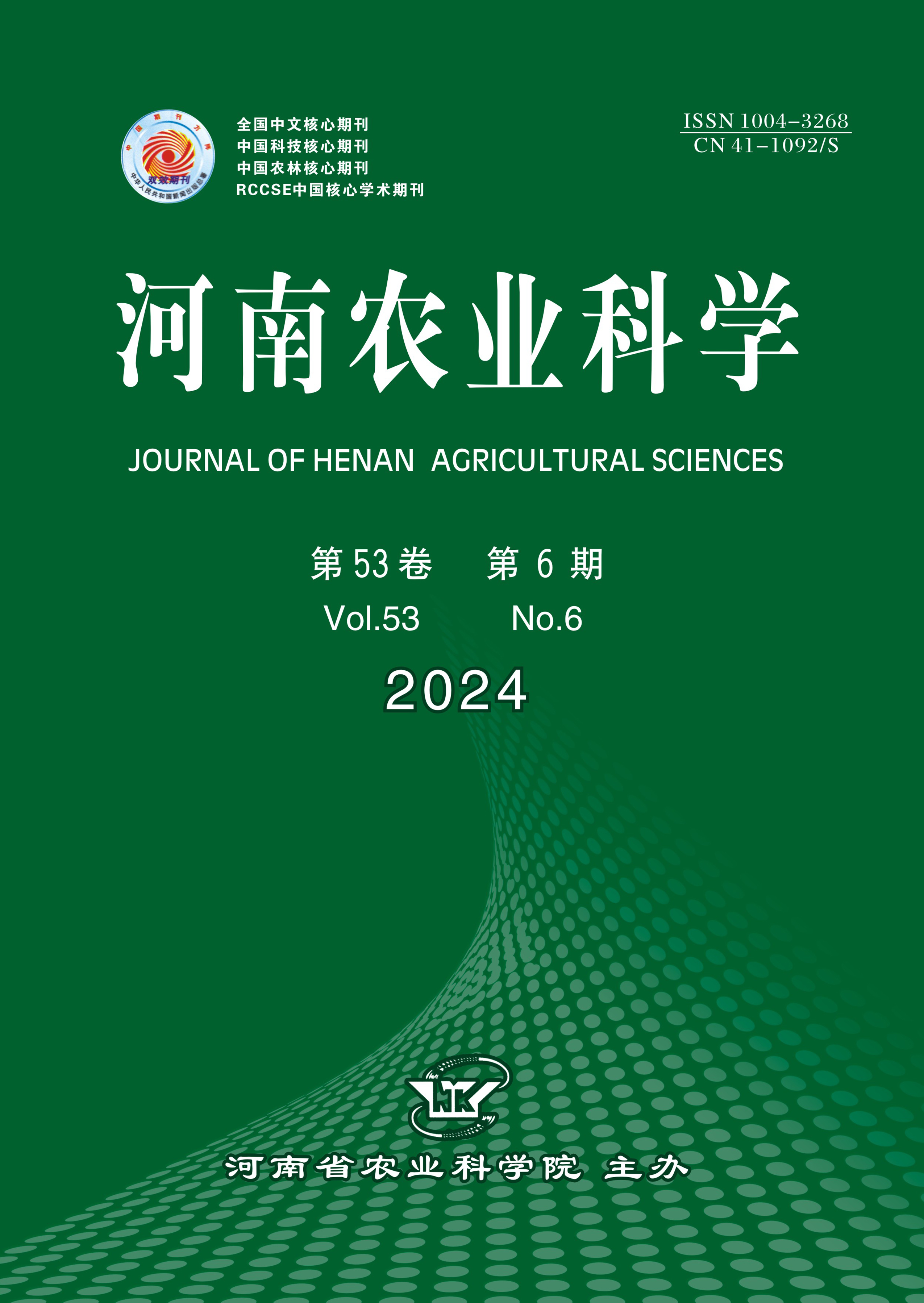-
Effects of Exogenous Melatonin on the Photosynthesis,ASA‑GSH Cycle,and Hormone Changes of Malus‘Royalty’under Drought Stress
- YANG Yan, XIAO Bin
-
2024, 53(6):
100-110.
DOI: 10.15933/j.cnki.1004-3268.2024.06.011
-
 Asbtract
(
)
Asbtract
(
)
 PDF (1670KB)
(
)
PDF (1670KB)
(
)
-
References |
Related Articles |
Metrics
To investigate the effects of exogenous melatonin(MT)on the growth status,photosynthesis,hormone metabolism,and ASA‑GSH cycle physiology of Malus‘Royalty’under drought stress,under potted conditions,normal water(CK),drought stress(DS),and six concentrations of melatonin(50,100,150,200,250,300 mg/kg,denoted as MT1,MT2,MT3,MT4,MT5,and MT6)under drought stress were designed,for a total of eight treatments.The effects of different concentrations of melatonin treatment on the growth,chlorophyll content,photosynthetic parameters,hormone metabolism,enzyme activity and antioxidant content in the ASA‑GSH cycle of Malus‘Royalty’under drought stress were analyzed.Compared with DS treatment,the plant height,basal diameter,total dry weight,total root volume,and average root diameter under DS+MT3 treatment increased by 54.7%,20.0%,143.2%,33.5%,and 6.9%,respectively.The content of chlorophyll a,chlorophyll b,and carotenoids increased by 20.5%,115.7%,and 83.0%,respectively.The net photosynthetic rate(Pn),transpiration rate(Tr),stomatal conductance(Gs),and water use efficiency(WUE) in the photosynthetic parameters increased by 51.8%,110.9%,55.5%,and 96.6%,respectively,and Pn returned to the CK level.The intercellular carbon dioxide concentration(Ci)and stomatal limitation value(Ls)decreased by 43.3% and 57.0%,respectively.Fv/Fm,Fv/Fo,ΦPSⅡ and Fv′/Fm′ increased by 5.4%,61.8%,171.6%,and 168.7%,respectively.The activities of ascorbate peroxidase(APX),dehydroascorbate reductase(DHAR),monodehydroascorbate reductase(MDHAR),and glutathione reductase(GR)in the ASA‑GSH cycle of Malus‘Royalty’increased by 168.3%,90.4%,167.2%,and 126.0%,respectively.The content of ascorbic acid(ASA),glutathione(GSH),ascorbic acid/dehydroascorbic acid(ASA/DHA),and reduced/oxidized glutathione(GSH/GSSG)increased by 102.5%,67.5%,129.8%,and 342.1%,respectively.The content of auxin(IAA),gibberellin(GA),and zeatin nucleoside(ZR)increased by 26.2%,24.6%and 89.3%,respectively,while the content of abscisic acid(ABA)decreased by 49.0%.Under drought stress,the growth parameters,photosynthesis,and ASA‑GSH cycle of Malus‘Royalty’are inhibited,and the hormone balance is disrupted.Spraying different concentrations of melatonin on leaves can regulate the metabolism level of endogenous hormones,improve photosynthesis,enhance the activity of related enzymes and antioxidant content in the ASA‑GSH cycle,promote the synthesis and cumulation of photosynthetic pigments,improve chlorophyll fluorescence parameters,and thereby increase plant biomass and enhance the drought resistance of Malus‘Royalty’.Foliar spraying of 150 mg/kg of melatonin has the best drought resistance effect on Malus‘Royalty’.
